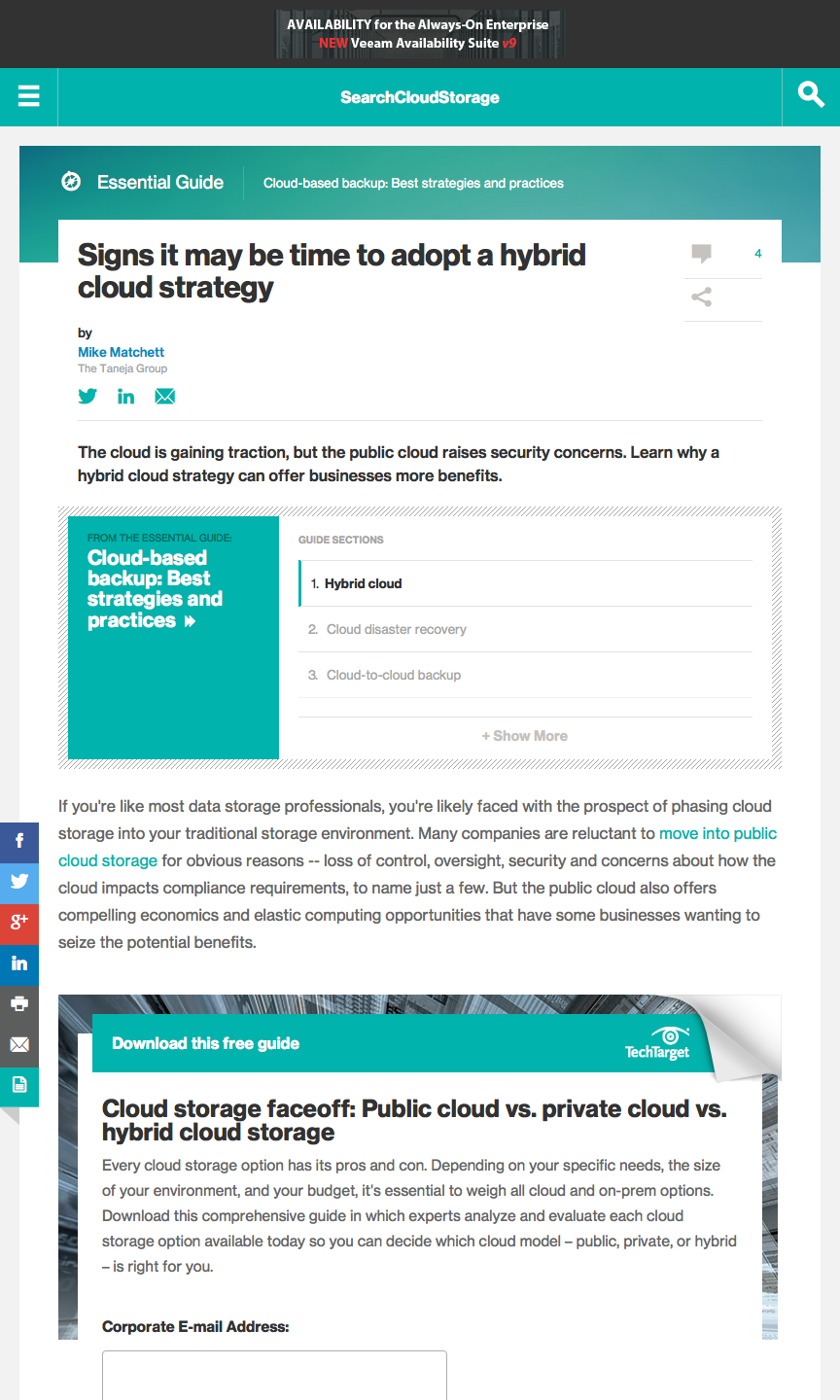Signs it may be time to adopt a hybrid cloud strategy

An IT industry analyst article published by SearchCloudStorage.
The cloud is gaining traction, but the public cloud raises security concerns. Learn why a hybrid cloud strategy can offer businesses more benefits.
 If you’re like most data storage professionals, you’re likely faced with the prospect of phasing cloud storage into your traditional storage environment. Many companies are reluctant to move into public cloud storage for obvious reasons — loss of control, oversight, security and concerns about how the cloud impacts compliance requirements, to name just a few. But the public cloud also offers compelling economics and elastic computing opportunities that have some businesses wanting to seize the potential benefits.
If you’re like most data storage professionals, you’re likely faced with the prospect of phasing cloud storage into your traditional storage environment. Many companies are reluctant to move into public cloud storage for obvious reasons — loss of control, oversight, security and concerns about how the cloud impacts compliance requirements, to name just a few. But the public cloud also offers compelling economics and elastic computing opportunities that have some businesses wanting to seize the potential benefits.
A sign that it may be time to adopt a hybrid cloud strategy is when business folks start contracting directly with public cloud providers for shadow IT services. Some of the reasons public clouds are attractive to business folks, assuming it’s not simply the friction of having to work with an underfunded internal IT group, include:
- Economic elasticity. Cloud services are available under a number of on-demand agreements. All of those shift the IT budget from periodic large Capex investments to smoother Opex payments. It’s possible that over time it may be more expensive from a TCO perspective to use large amounts of public cloud services, but the ability to continually adjust the volume of services needed while paying for essentially only what you use makes a lot of sense in the face of unpredictable business environments.
- Agility and quickness. Massive amounts of resources can be spun up in minutes when needed, as opposed to the days, weeks or months required for IT to procure, stage and deliver new infrastructure. At the same time, these resources can be shifted, almost on-demand, as needs change.
- Broad functionality. Today’s public clouds offer any range or level of cloud outsourcing desired, including low-level infrastructure, container-like development platforms, fully functional applications and complete subscription business services.
The sensible cloud storage strategy is a hybrid approach in which IT retains control of cloud consumption and integrates it with on-premises resources as appropriate.
But there’s another side to the story. When business essentially goes outside the IT department to contract with public cloud services, problems can arise. That’s when issues of governance and control surface, including lack of compliance oversight, loss of data management control and potential security risks…
…(read the complete as-published article there)
